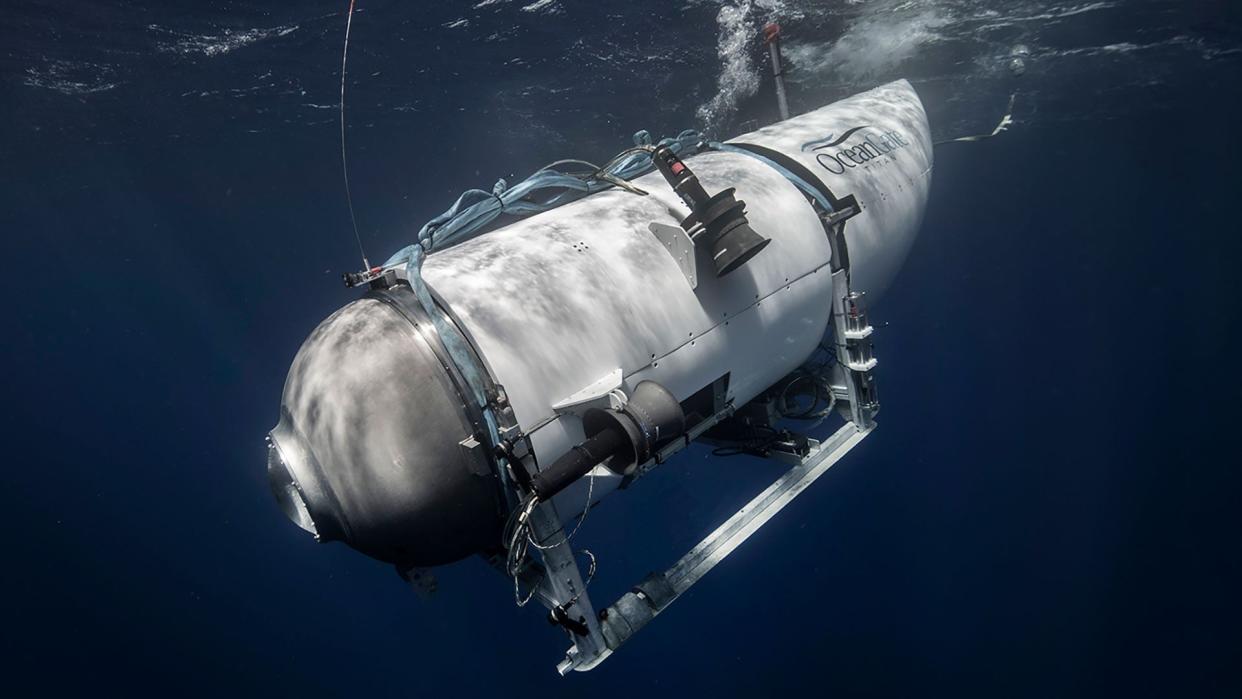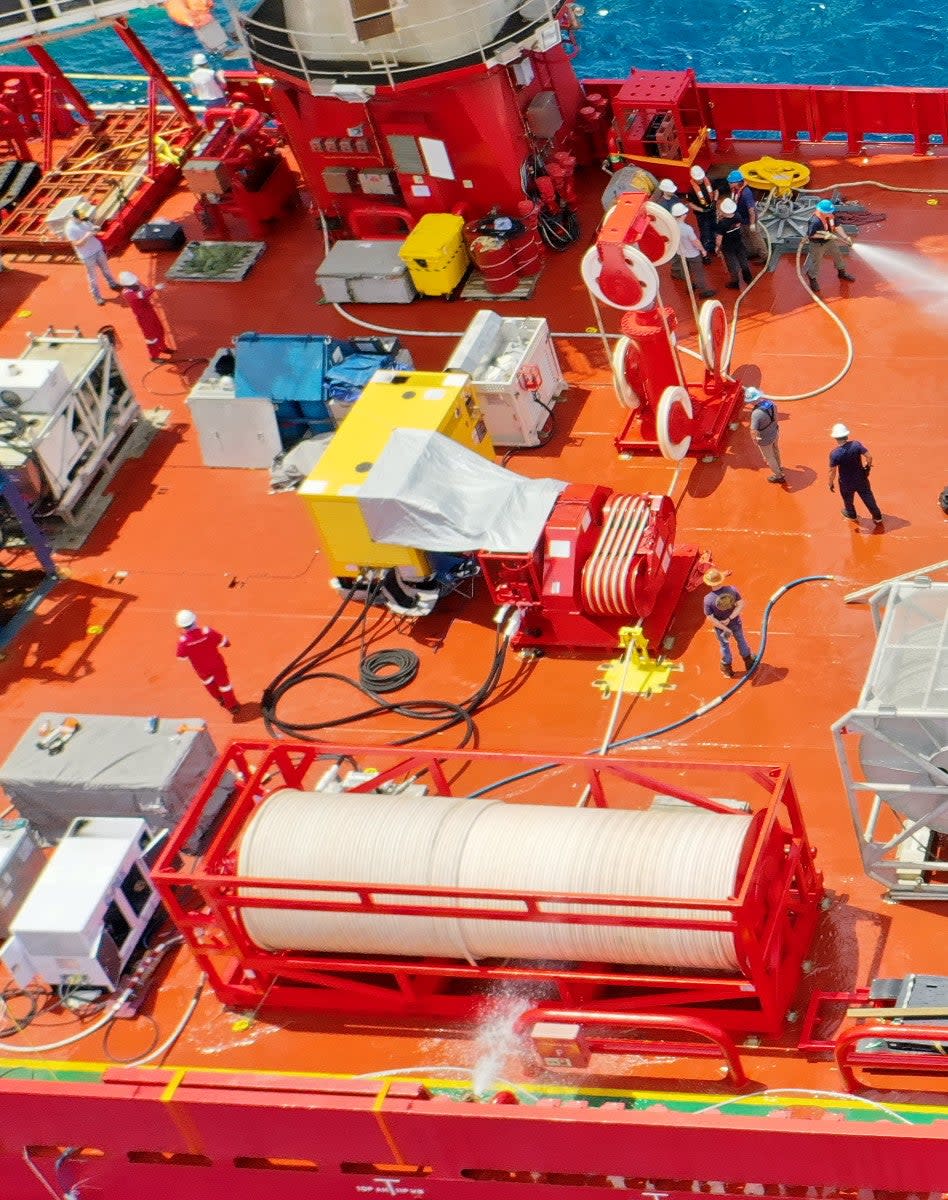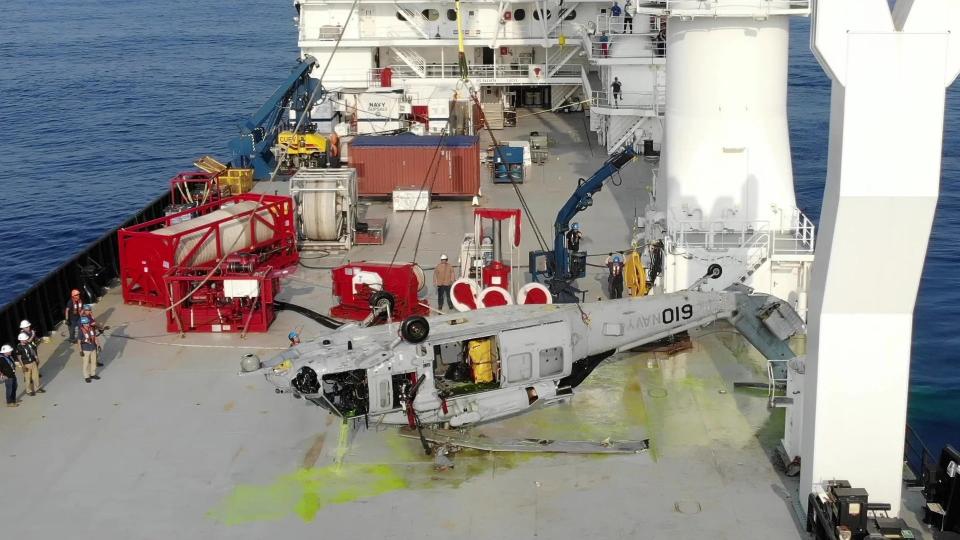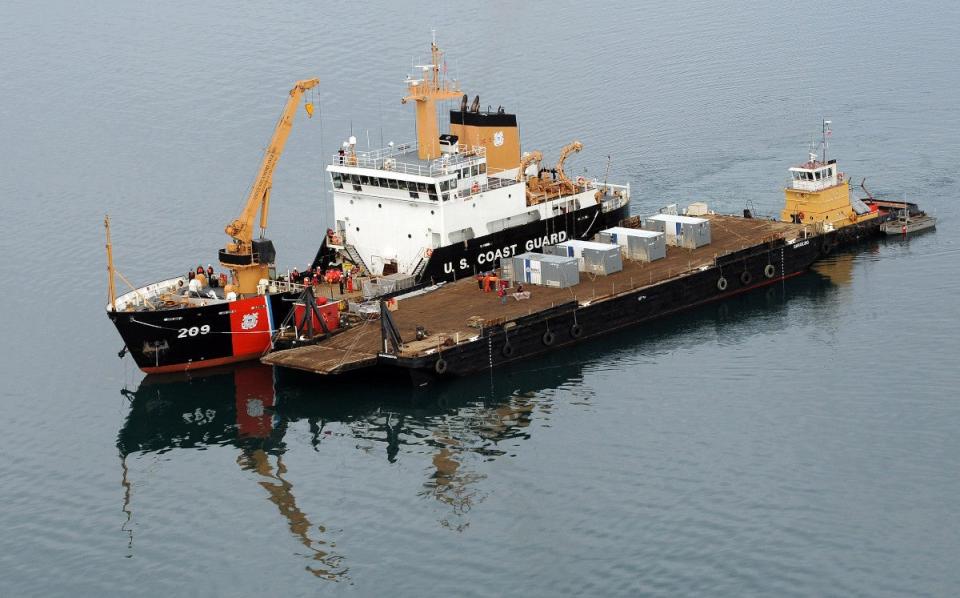Navy Rushing Deep Sea Salvage System To Aid In Titan Submersible Search

The U.S. Navy is sending its Flyaway Deep Ocean Salvage System to help in the effort to find a submersible that recently went missing in the Atlantic Ocean and hopefully help rescue the five individuals inside. This is one of a number of specialized Navy deep-sea search, rescue, and salvage capabilities, that also include its own submersible platforms and remotely-operated vehicles, or ROVs. There are questions about why it has taken so long to employ any of these capabilities, but the depths and other factors in this case still present major challenges for any rescue attempt.
The missing submersible, known as Titan, which belongs to OceanGate Expeditions and was being used to take tourists down to see the famous sunken wreck of the ocean liner RMS Titanic, has not yet even been located. Titanic lies at a depth of around 12,500 feet and Titan was supposed to have surfaced on Sunday. As of yesterday, U.S. authorities said they believed the individuals inside, which includes OceanGate's CEO Stockton Rush, had between 70 and 96 hours' worth of oxygen left.
https://www.youtube.com/watch?v=5KdsGPsF2go
“The Navy is sending subject matter experts and a Flyaway Deep Ocean Salvage System (FADOSS), motion compensated lift system designed to provide reliable deep ocean lifting capacity for the recovery of large, bulky, and heavy undersea objects such as aircraft or small vessels, from Navy Supervisor of Salvage," a Navy Spokesperson told The War Zone. This "expertise and equipment will support USCG [U.S. Coast Guard] and the unified command. Personnel and equipment are scheduled to arrive at St. John’s [in Canada] tonight."
FADOSS is a modular system that can be employed from any suitable ship to recover objects weight up to 60,000 pounds. Titan weighs some 23,000 pounds, according to OceanGate.
"It is possible to mix and match the components based on the size and capabilities of the platform which will be mobilized, the depth of the object to be retrieved, the weight of the object, and configuration for running the lift line from the ship to the sea, where fairlead block are used," according to the Navy.

The Navy's official fact sheet does not provide a maximum depth rating for FADOSS. However, the system has been employed in the past to pull up the wreck of an MH-60S Sea Hawk helicopter that was sitting on the seabed some 19,075 feet below the surface. Regardless, recoveries of large objects from extreme depths are extremely complicated due to various factors, including the pressures and current involved and the simple time it takes to lower recovery assets down and pull everything back up. OceanGate's Titan submersible needs between six and eight hours to get down to the wreck of the Titanic.

“The Navy is working to coordinate assets with the USCG [U.S. Coast Guard] and the unified command," a Navy spokesperson had told The War Zone in a statement today. They said they could not immediately provide any additional details about this forthcoming deployment.
During a separate press conference today, the U.S. Coast Guard announced the creation of the unified command to coordinate further search and rescue operations. The Coast Guard did say that its Juniper class buoy tender USCGC Sycamore is already en route to the area where OceanGate's Titan went missing. Sycamore has a crane, which could be used to deploy deep-diving assets like ROVs and recover heavy objects.

The Canadian Coast Guard's Sir John Franklin class cutter John Cabot is also now heading to the area. The Canadian research ship Polar Prince and the commercial pipe-laying vessel Deep Energy are already taking part in the search efforts. Polar Prince has a deep-sea sonar search capability and Deep Energy's crew has been employing at least one ROV.
https://twitter.com/CavasShips/status/1671211533894811669?s=20 https://twitter.com/CavasShips/status/1671207016579182602?s=20
At least one Royal Canadian Air Force CP-140 Aurora maritime patrol plane (misidentified initially as a P-8 Poseidon) has dropped sonobuoys to try to help find the submersible, too. U.S. Coast Guard and U.S. Air Force C-130 Hercules aircraft have been used to search for any signs of Titan or its occupants on the surface. The area that has already been the subject of these searches spans some 10,000 square miles.
https://twitter.com/USCGNortheast/status/1671144862022868994?s=20 https://twitter.com/thenewarea51/status/1670897323600142341
There is always the possibility that additional Navy assets could be employed, as well, if requested. The service does have deep-sea rescue and salvage capabilities beyond FADOSS that it could contribute in this case. This includes the Submarine Rescue Diving Recompression System (SRDRS) and the Cable-controlled Undersea Recovery Vehicle 21 (CURV-21) ROV.
SRDRS is part of a larger underwater rescue ecosystem within the U.S. Navy, led by Undersea Rescue Command (URC), which is focused primarily on being prepared to extract sailors from stricken American and foreign submarines. URC is postured to be able to get systems like SRDRS loaded up and ready to go anywhere in the world within 24 hours.
CURV-21 and other ROVs generally belong to the service's office of the Supervisor of Salvage and Diving (SUPSALV), which is on call to help bring various things back up from the seabed, including, sensitive objects belonging to the U.S. military and foreign armed forces.
There are reports that U.S. Air Force C-17 cargo aircraft at Buffalo Niagara International Airport in Buffalo, New York are preparing to bring in another civilian ROV and other related assets, though it's not clear if this is directly related to the Navy's present efforts. This additional submersible is reportedly Pelagic Research Services' Odysseus 6K, which has operated under contract with the U.S. government, among other organizations, in the past.
https://twitter.com/patryanreports/status/1671192360200335362?s=20
Unfortunately, the Navy's SRDRS is unlikely to be relevant in this particular instance, given that it is only rated to perform rescues a depths of up to 2,000 feet (610 meters). Though it remains unknown exactly where Titan might be located, it was heading to the Titanic, which is situated at a depth greater than 10 times what SRDRS is rated for.
https://www.youtube.com/watch?v=KEuLS1tEXfc
Even if a submersible was available that could get down to the proper depth, the occupants of the Titan submersible are sealed inside before it is launched from its mothership on the surface. There is therefore no way to safely extract the individuals inside at extreme depths, regardless. This also means that if Titan was able to get to the surface on its own, its occupants still would not be able to escape without outside assistance.
ROVs like the Navy's CURV-21 could also be useful for recovering Titan and the people inside. In addition to sonars and cameras, CURV-21, which can operate at depths of up to 20,000 feet, can be fitted with various mission packages. This includes ones designed to help raise sunken objects up from the seabed.
https://www.youtube.com/watch?v=hvi6Go8jg4c\u0026t=90s
As mentioned earlier, CURV-21 helped with the retrieval of an MH-60S Sea Hawk helicopter that went down off the coast of the Japanese island of Okinawa in 2020.
The U.S. Navy may also be able to help just in locating Titan or helping to at least narrow the search area. The service has various surface vessels and submarines with powerful sonar capabilities. This part of the Atlantic is known to often see significant U.S. and foreign submarine activity. Though this has been changing somewhat recently, the Navy has historically been very tight-lipped about deployed submarines, and it's possible that it has one or more in the area already.
The Navy also operates a network of so-called Fixed Surveillance Systems (FSS), part of the broader Integrated Undersea Surveillance System (IUSS), underwater in the Atlantic primarily to monitor potentially hostile submarine movements.
The FSS component of IUSS contains systems akin to the famed the Sound Surveillance System (SOSUS). The initial version of which was put into service in 1959 and saw its heyday during the Cold War. Portions of SOSUS remain active today, but its military utility has waned and it has become increasingly used for scientific research.
The exact capabilities of the FSS networks today are highly classified, but are understood to be extremely sensitive. If Titan had suffered some kind of major fault, such as a catastrophic decompression, these systems might have detected it. They could potentially pick up things like people banging on the inside of the Titan, though this could be more difficult depending on the depth of the submersible. For anyone trapped in a stricken submarine, this kind of noisemaking has long been and continues to be an important way to signal that they were still alive and give hints as to their location.
Other similar sensor networks might also be able to help, if they aren't being employed already. For instance, seismic data collected by listening posts established to help monitor for violations of the Comprehensive Nuclear-Test-Ban Treaty helped in determining the location and fate of the Argentinian submarine ARA San Juan after it went missing in November 2017. There were sadly no survivors from that incident.
https://www.youtube.com/watch?v=ls1_OmQ1VvI
Just finding where Titan might be appears to be a huge issue at present. Criticisms about the U.S. government's efforts, in particular, are mounting. In response, American officials have stressed the need to actually locate the missing submersible before committing any rescue assets.
"The Navy and Coast Guard are trying to figure out what makes the most sense, but the Coast Guard is really the lead for this mission," Deputy Pentagon Press Secretary Sabrina Singh said in response to a question about the timing of the response efforts at a press conference today. "So we are in direct support for them, and we will continue to be for as long as they request assistance."
In addition, there are reports that OceanGate may have waited some eight hours to alert authorities of the incident in the first place for unclear reasons.
Other questions about OceanGate's operations have also emerged. David Pogue, a correspondent for CBS News, posted on Twitter about his first-hand experiences observing the operation of Titan from its mothership for a story last year. He said that the submersible does not have any kind of remote locator beacon and that tour he observed was "lost" underwater for around five hours. He added that OceanGate cut off the internet connection from the mothership to prevent him and others from posting online about it at the time.
https://twitter.com/Pogue/status/1670826522138091521?s=20 https://twitter.com/Pogue/status/1670835763536183297?s=20
You can watch Pogue's full report for CBS News below:
https://www.youtube.com/watch?v=29co_Hksk6o
In 2018, OceanGate also settled a lawsuit with a former employee, who the company had alleged had breached his contract by releasing certain details about Titan. The individual in question, David Lochridge, filed a counterclaim alleging the firm had fired him in retaliation for raising concerns about the safety of the submersible, including whether its depth rating was accurate and about the use of flammable materials used inside its hull. Fires onboard submarines can be especially deadly for a number of reasons as The War Zone has explored in the past.
Lochridge's specific claims have not been independently substantiated. However, in 2020, OceanGate CEO's Rush admitted that Titan's composite material hull had shown “signs of cyclic fatigue" and that its depth rating had been reduced to a point where it was “not enough to get to the Titanic." Repairs and/or changes were reportedly made and the submersible dove down to the Titanic for the first time in 2021.
Whatever the case, the Navy is now moving to be more actively involved in the search and rescue efforts. Hopefully, the assets the service contributes will be able to help in finding the Titan submersible and its passengers.
This story continues to develop and we will update it as more information becomes available.
UPDATE 5:45 P.M. EST:
The Pentagon has now confirmed that the C-17s seen earlier at Buffalo Niagara International Airport were helping to move assets related to the search and rescue operation, but that are not directly tied to the Navy's current efforts.
"U. S. Transportation Command is supporting the search effort with (3) C-17 aircraft that are transporting commercial, rescue-related cargo and equipment from Buffalo, NY to St Johns, Newfoundland," Deputy Pentagon Press Secretary said in a statement The War Zone obtained. "As of 4:30 pm eastern time today, all three aircraft have departed Buffalo, and the last aircraft is scheduled to land at St. John shortly."
Contact the author: joe@thedrive.com

